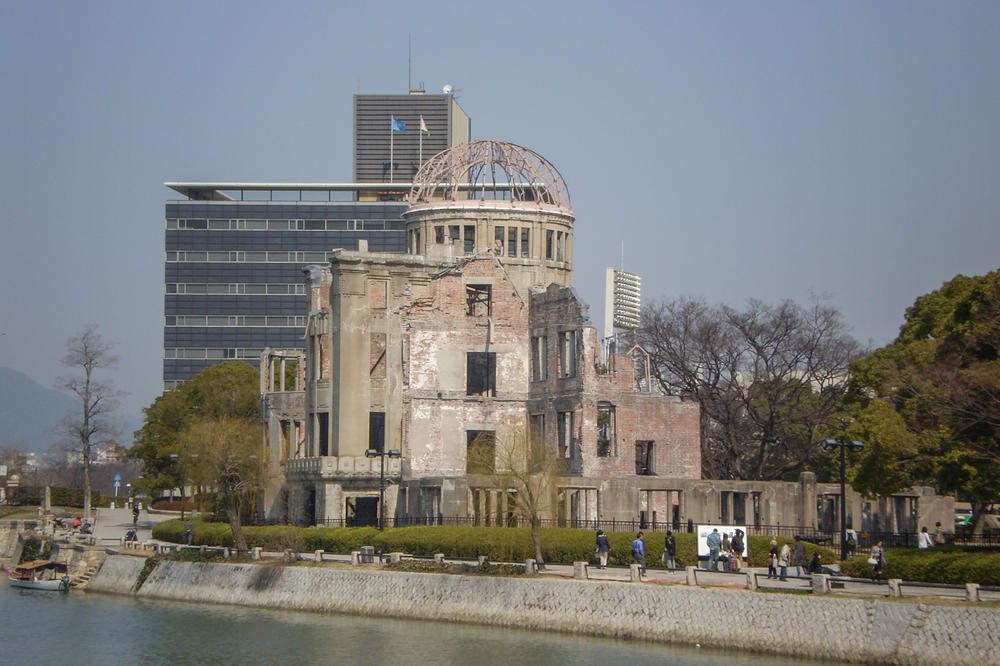Still Struggling over Interpretation
75 Years after the End of World War II: The war in Asia ended almost four months later than in Europe.
May 25, 2020
The Hiroshima Peace Memorial, better known as the A-Bomb Dome, commemorates the atomic bombing on August 6, 1945.
Image Credit: Michaela Viecenz
On the morning of December 7, 1941, Japanese forces attacked Pearl Harbor, an American naval base on the Hawaiian island of O’ahu. The attack marked the entry of the United States into the war and finally turned various conflicts in Europe, North Africa, and Asia into a world war. To date, the incident has been inscribed in the collective memory of America and Europe. The events leading up to it over a long period of time are less present in that memory.
Urs Matthias Zachmann, a professor of Japanese studies at Freie Universität Berlin, points out that in 1941 the war was already in full swing in East Asia. It started with Japan's occupation of Manchuria in 1931.
In the 1930s Japan was the dominant power in East Asia. In 1895 the empire of Japan had already annexed today's Taiwan, and in 1910 it occupied Korea. Japan had a strong economic influence on mainland China, operating a railway and numerous mines. In the period between the two world wars, mainland China was not a united nation state, but by the end of the 1920s, a national movement took off there. Urs Matthias Zachmann points out that the Chinese striving for unity was a thorn in the side of the Japanese.
In 1931 Japan responded by invading Manchuria, a region northeast of Beijing. In 1937 the smoldering conflict escalated to war, and Japan occupied the coastal cities of Shanghai and Nanjing. “The Japanese military was sometimes extremely brutal,” says Urs Matthias Zachmann. “In the Nanjing Massacre in 1937/38, for example, tens of thousands of civilians were brutally murdered.”
The Japanese armed forces continued to march south, but the farther south they got, the more suspicious the United States became. The United States had been expanding in the Pacific since the late 19th century. They annexed Hawaii in 1891 and later invaded the Philippines. “The Americans viewed South Indochina as their sphere of influence,” says Urs Matthias Zachmann. “They responded to Japan's expansion with economic sanctions. They boycotted Japan's oil imports and froze the country's bank accounts and gold reserves.”
The Horror of the Atomic Bombing
Because the League of Nations also condemned the Japanese war, the Japanese empire withdrew from the international organization in 1933. Japan became increasingly isolated economically and politically. “The attack on Pearl Harbor was intended to force the United States back to the negotiating table,” says Urs Matthias Zachmann. But that did not come into question for the Americans. Together with Great Britain and Australia, they reacted very harshly. They gradually pushed Japanese forces out of the Pacific, until the U.S. Air Force finally dropped atomic bombs over the cities of Hiroshima and Nagasaki on August 6 and 9, 1945. With the capitulation of Japan on September 2, 1945, World War II also ended in Asia.
“Today, a large part of the Japanese population is convinced that the attacks on China and America were wrong,” says Urs Matthias Zachmann. But there is a nationalist minority that tries to relativize the war guilt of Japan, and this minority is getting louder and louder. This minority enjoys sympathy from the government of the current Prime Minister Shinzo Abe. “Coping with and evaluating the war is not over in Japan,” says Urs Matthias Zachmann. “The memory of the war is still the subject of political interpretation and struggles over the interpretation. Thus, it is all the more important that the events continue to be discussed.”
The original German version of this article was published on May 17, 2020, in campus.leben, the online magazine of Freie Universität Berlin.

